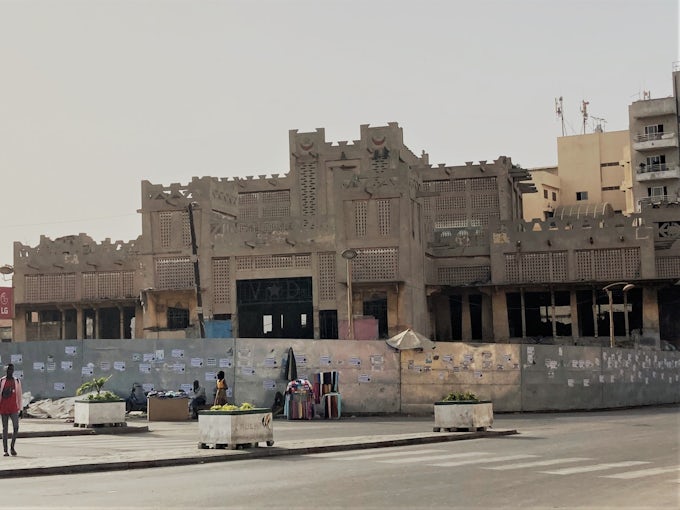Nzinga Mboup: The exploration of the culture and imaginaries of the Lebu community is the basis of our work and has enabled us to become aware that their heritage is now in danger. 01 The Lebu people have managed to maintain a balance between humans and nature. But presently, this equilibrium is threatened by rampant and chaotic urbanisation, land speculation, the desecration of certain sites or the abandonment of certain cultural practices.
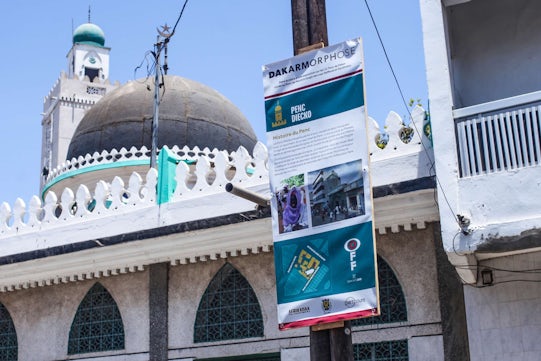

How do you see these threats to Lebu cultural heritage and to the city in general?
Carole Diop: Lebu heritage is not the only one to suffer these attacks, it is the whole architectural heritage of the city that is threatened to disappear. Several iconic buildings that are often listed as national heritage have been demolished the past couple of years. Postmodern buildings from the 1970s are also affected (I’m thinking of the Hôtel Indépendance whose emblematic facade was demolished in 2018), and the phenomenon has as just yet accelerated.
Indeed, within a couple of months, we have just witnessed the demolition of the Sandaga Market; of the former Department of Urban Planing which housed the Bureau d’Études Henri Chomette (BEHC), and just a few days ago, of the maternity ward of Le Dantec Hospital. Whether it is the material or immaterial Lebu heritage, or the capital’s architectural heritage, entire sections of Dakar’s and Senegal’s history are disappearing.
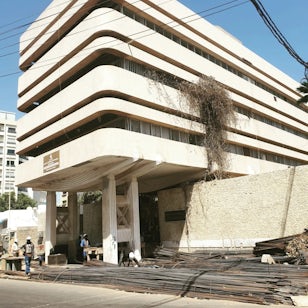
NM: I acknowledge your observations and concerns, but ultimately, why is it important? Why what is happening should alert us?
CD: In my view, heritage tells the story of the city. These demolished buildings are memories and chapters of history for all the people of Dakar. The Hôtel Independence, for instance, evokes for me high school memories. This is what I call ‘urban memory‘, a form of collective memory. What worries me is that future generations will not know this.
We agree that a city has to evolve, and I’m not fundamentally against the demolition of certain buildings, but not without respecting certain necessary steps, prior. One mut interrogate the necessity of demolition, the historical and architectural value of a building that one wants to demolish, but above all what one wants to produce instead of that building. What is proposed? If building that contributed to the country’s history are destroyed for others that will fall into oblivion, what interest is there?
Several reasons are given to justify the destruction of these buildings, some of which, like the Sandaga Market, are classified as national heritage: they are often considered barely habitable, constituting a health risk, or too expensive to maintain. But with the demolition of the maternity ward of Le Dantec Hospital which had shortly prior been renovated, one realises that these reasons are most often pretexts, and that the actual cause behind these destructions is land speculation. This makes the protection of architectural heritage very difficult as economic reason is challenging to oppose.
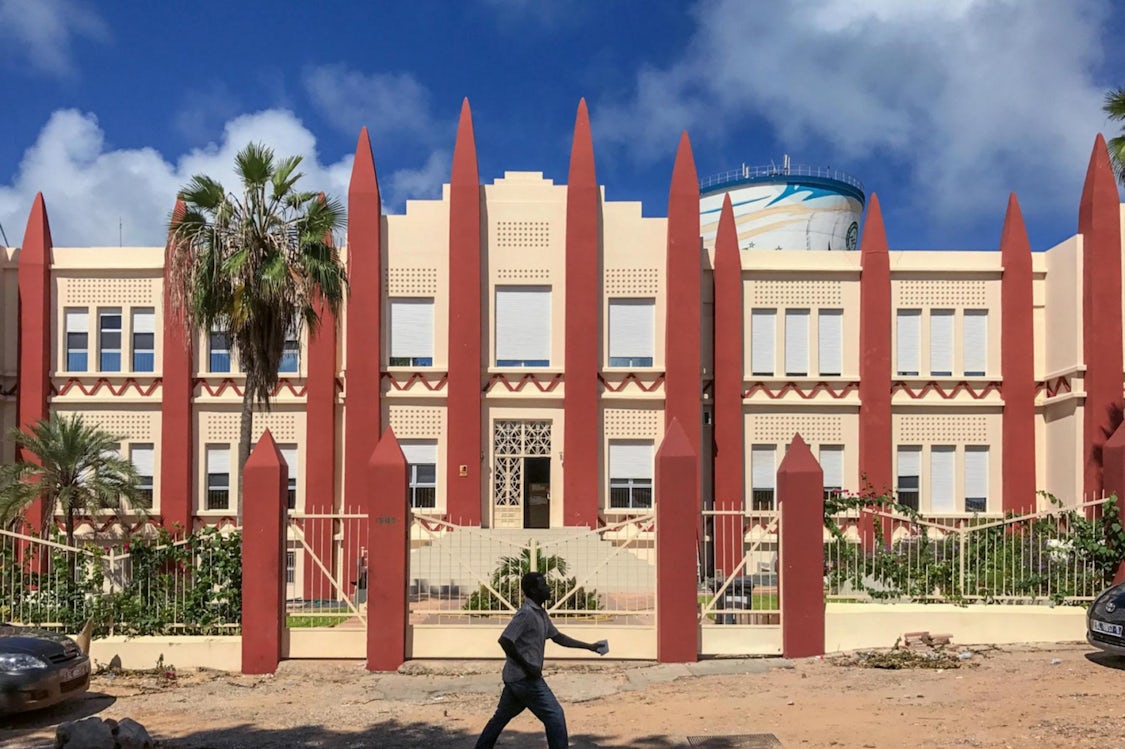
CD: As someone who did not grow up in Dakar, what is your relationship to the city’s architectural heritage and its urban memory?
NM: Although I did not grow up in Dakar, I heard stories from my father and my close family who told me about how certain places in the city used to look like, places that are full of memories for several generations. For instance, I learned that the Casinos used to be Scores, and before that, Printanias, like the building that now hosts the Selebe Yoon Gallery. 02 Other personal memories, such as holiday celebrations at the CICES (Centre International du Commerce Extérieur du Sénégal) where I don’t go much anymore, remind me of the importance of public spaces that still exist and are part of collective memory and, as such, would get the public’s support for their preservation.
Like you Carole, I think that the privatisation of public heritage is problematic as it doesn’t create any opportunity to maintain a public debate about patrimonial collective urban spaces. Beyond the buildings, the public sphere – including statues and street names – are the symbols and embody the values of a society, and influence our reading of its history. The preservation of Louis Faidherbe’s statue in Saint-Louis was much debated and the name of the streets on the plateau named after French colonial administrators have often been renamed after the Independence in 1959. All this shows that the relationship we entertain with history and public space is still at the heart of civil debate, even if not everyone agrees. The most important thing is to generate a consensus and to accept that heritage evolves for the public interest or for the generations to come.


CD: As an architect working in Senegal, how important is the question of heritage for your practice?
NM: For me, practicing architecture in this city as if it didn’t have a history is dangerous. Architecture must get to know about its context and perpetuate or emancipate itself from an architectural tradition that precedes us and that we know. Architecture is a traditive profession and heritage plays a central role in one’s learning and knowledge of construction.
Studying heritage allows us to understand the formation of urban landscape and to learn the different techniques of construction and building typologies that have been built over time. When we work on the construction or renovation of a building in the SICAP (Société Immobilière du Cap-Vert) where houses from the 1950–60s still exist, getting documentation on the typologies and urban planning as well as information on the construction and sanitation plans kept in the SICAP archives gives us tools to optimise what exists. If it appears necessary, we build again, but within an established structure for more sustainability and durability.
CD: What can we learn from pre-colonial and colonial architecture and from the different architectural styles that are observable in the city?
NM: Senegalese architectural heritage is rich and made of traditional buildings from – as you point out – the pre-colonial and colonial periods, as well as from the modernism of the region and the contemporary city. My architecture practice relies on bio-climatic design principles. Therefore, my approach of architectural traditions that predate environmental questions always takes the climate into account to rethink them. The impluvium hut in Casamance informs us about rainwater collection and clay (bauge) construction. Colonial buildings in Saint-Louis, with their courtyard verandas that protect walls from the sun, and even the modern building from Cheikh Anta Diop University such as the Faculty of Medicine, Pharmacy and Odontology, show us how to implement trellised panels for ventilation and brise-soleils for solar protection.
The natural milieu offers a wealth of materials such as clay in Fouta and Basse-Casamance, basalt in the buildings of Gorée, and Rufisque stone in the buildings of Rufisque. These natural materials and the construction techniques used to implement them are disappearing, giving way to the exclusive use of concrete, glass and aluminium in contemporary buildings.
Further, contemporary Senegalese architects have also shaped the urban landscape. Some, such as Cheikh N’Gom, are distinguishable through a singular architectural approach, recognisable through the rigour, rhythm and technicity he demonstrates in buildings such as the Faycal Building or the BCEAO tower designed with avec Pierre Goudiaby Atepa. The latter’s hallmark are important buildings and monuments with sculptural shapes recognisable beyond Senegal. These architectural styles are the result of the Goudiaby Atepa’s personal research. The creation of their own architectural language has allowed them to affirm a strong identity that is part of Senegal’s building and urbanistic culture.
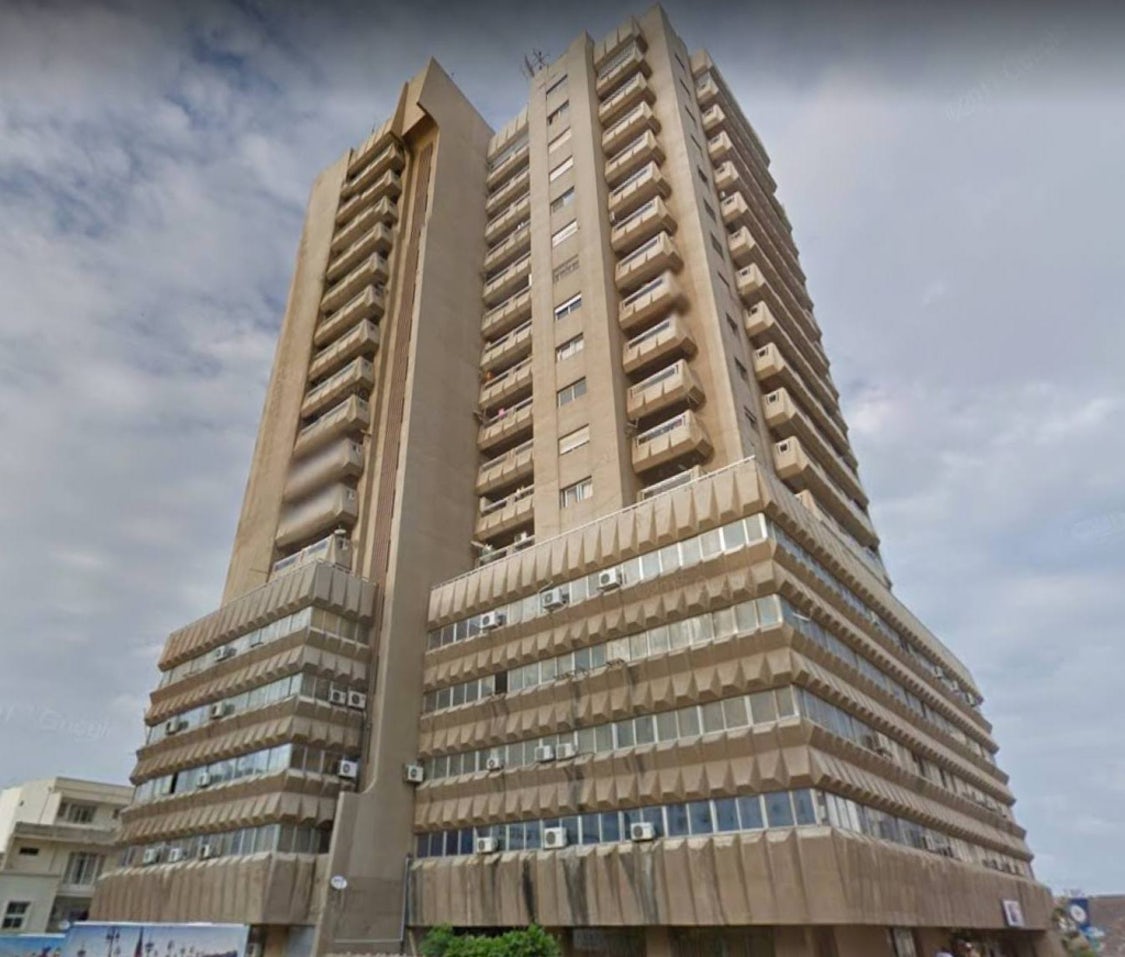
“Architecture is not a discipline in which creation takes place ex-nihilo; it is based on learning concepts, techniques and established knowledge and practices that have been tested before us and whose use and durability have been proven in time and across contexts.”
CD: You have described architecture as a ‘traditive profession’, i.e. one that transmits. What do you mean by this?
NM: Architecture is not a discipline in which creation takes place ex-nihilo; it is based on learning concepts, techniques and established knowledge and practices that have been tested before us and whose use and durability have been proven in time and across contexts. For architects trained abroad like us – due to the absence of the National School of Architecture shut down in 1991 – our references in the history of architecture come from the Western canon. Even though movements such as modernism travelled and found their way to Senegal, we need to understand the subtleties (usually climatic) of adapting certain architectural processes in Africa and the compatibility of certain housing models (apartment buildings, for example) with our cultures and forms of life, which differ from those of the West (extended and non-nuclear families, domestic service spaces outside the house, the need for community spaces for social events, etc.).
In my opinion, what is rooted in tradition is more likely to last over time. Traditional socio-spatial structures that last, such as the Pencs 03, bear witness to this. What do you think about this?
CD: I know what you mean, but I’d like to add some nuance to it. Can we say that the people have really appropriated these spaces? When we see what is happening in the village of Ngor, for example, we can wonder whether some people do not actually wish to abandon the traditional model for another one. In Ngor, the traditional alleys and structures have been preserved, but people aspire to a ‘modern’ habitat, influenced by what they have seen in the neighbouring residential areas. This leads to development problems, as we now have narrow streets with buildings of up to 4 storeys high. Natural light no longer gets through, the rules of prospect are not respected, and the air circulates less well. This leads to public health and safety problems.
So I ask you the following question.
How can we support people from these traditional social and spatial structures who, in a city that is becoming denser and where there are more and more inhabitants, increasingly wish to house their families in what they consider to be ‘modern’ housing?
NM: As architects we have a duty to reflect on the mutations and projections made in the city and to accompany citizens and politicians in planning for the construction of healthy living spaces for all its inhabitants. However, I think that there is often a categorisation of vernacular and traditional urbanism and buildings as informal and opposed to a certain construction of modernity. By moving towards European, American, Asian, or non-African models of cities and housing, there is a risk of breaking social bonds that are allowed thanks to a collective living arrangement as can be seen in traditional concessions where several households centred around a courtyard are gathered. A student at the University College of Architecture and Design (a private architecture school), gave me the example of her childhood spent in a polygamous household in which her father’s various wives and children lived horizontally, sharing the common living spaces around the meal. As soon as her father could afford it, the compound was demolished to make place for a building in which each of the wives and children had their own flats, on each level, with separate kitchens. From then on, sharing meals was no longer spontaneous, creating a form of alienation between family members.
Architecture organises the way we live in society and part of our common heritage and inheritance is in the way that, over time, rules of life have been created that correspond to societal values, climatic and other realities, economic for example.
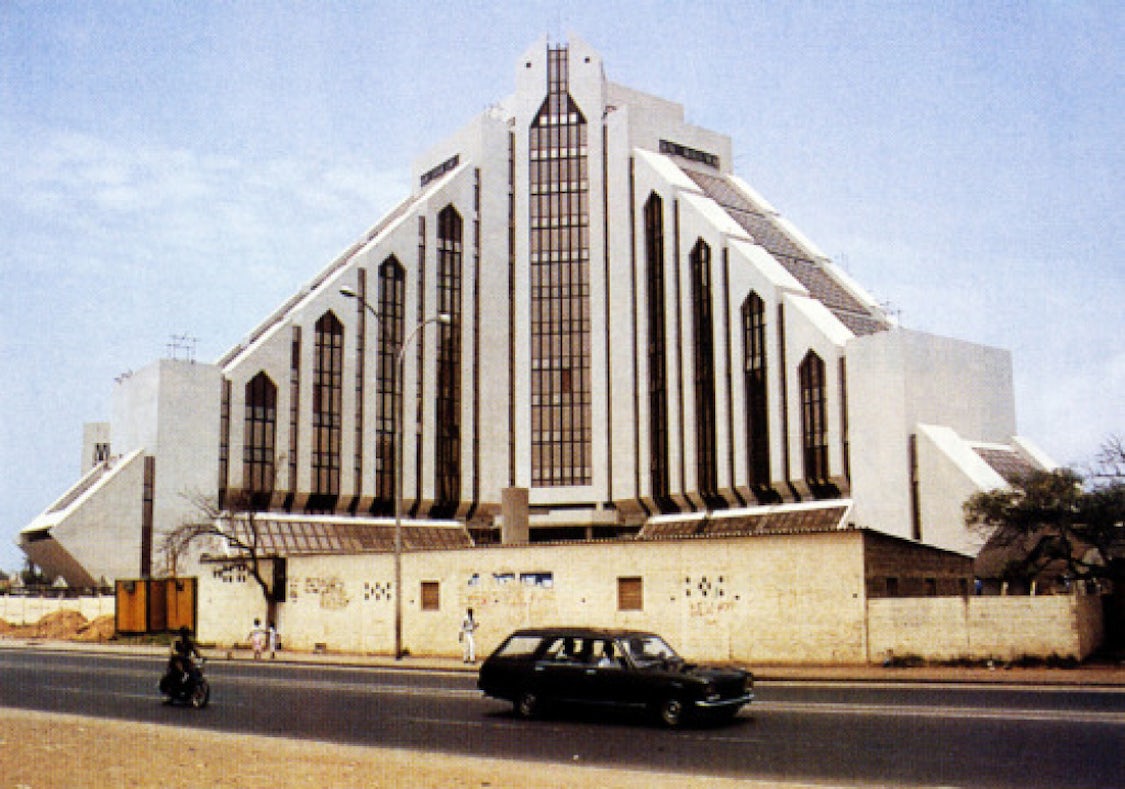
CD: In your opinion, what models should be developed?
NM: In all residential areas in Dakar, there are shops – local retailers offering basic goods – that are less than 5 minutes’ walk from every house or home. These businesses are all situated on the ground floor and usually at street intersections, which maximises their accessibility to residents. I am not aware of any planning rules that set the frequency of these shops, which are run by various entrepreneurs and are not part of a chain (like supermarkets or mini markets). These shops are therefore categorised as informal, but meet collective needs that are very specific to Senegalese cities. In this sense, they are part of our heritage.
Often, what is considered worthy of being part of the national heritage are important public buildings from the pre-colonial period, such as the impluvium hut or the Great Mosque of Djenné (in the Sahel region). For many, there are also buildings from the colonial period (the Chamber of Commerce or the Sandaga Market); but those from the modern period are struggling to be become part of the heritage to be protected. Moreover, vernacular urban constructions such as the Pencs and the shops are not always valued for their role and function in Senegalese society.
With this conversation, we have highlighted the importance of heritage. What can we do to protect it, what solutions can we propose?
CD: The first thing to do is to make the authorities aware and convince them of the economic, historical and educational value of architectural heritage. Why couldn’t we, like other countries that have built their identity on their heritage, value our history? Would cities like Paris, Venice or Djenné have the same aura without their architectural heritage? This is what I try to convey through the ‘architectural walks’ that I have initiated in the city. 04
Then you have to document and record what has already been lost and what is in danger of disappearing (this is one of the objectives of Dakarmorphose). Finally, you have to create models that, in the future, will enter history – which is what you are doing with the project Worofila by developing a bioclimatic architecture.
To conclude, one must set concrete examples.
Footnotes
-
Dakarmorphose was first exhibited during ‘Dak’Art: African Contemporary Art Biennale’ in 2018, with a restitution at Penc Mbott and posters in front of the mosques of the twelve Pencs of Dakar.
-
Casino and Score are supermarket chains’ Printania is a department store chain. Selebe Yoon is currently hosting ‘Balle de Match’, a personal exhibition by the Senegalese artist Mbaye Diop whose work reflects on the confrontations between models imposed by colonial history and the persistence of ancestral forms in the city of Dakar. As part of Diop’s exhibition, we have curated an archive room which addresses some of the issues discussed in this exchange. Mbaye Diop, ‘Balle de Match’, Selebe Yoon, Dakar, 2 December 2022–4 March 2023.
-
The Penc refers to both a community and a place where that community gathers in Lebu and Wolof cultures. It is identified by a founding chief and a lineage whose family name lasts over time. It includes several family houses and was traditionally centred around the palaver tree.
-
See Carole’s Instagram page @carolediop. The walks can be booked by contacting her.
